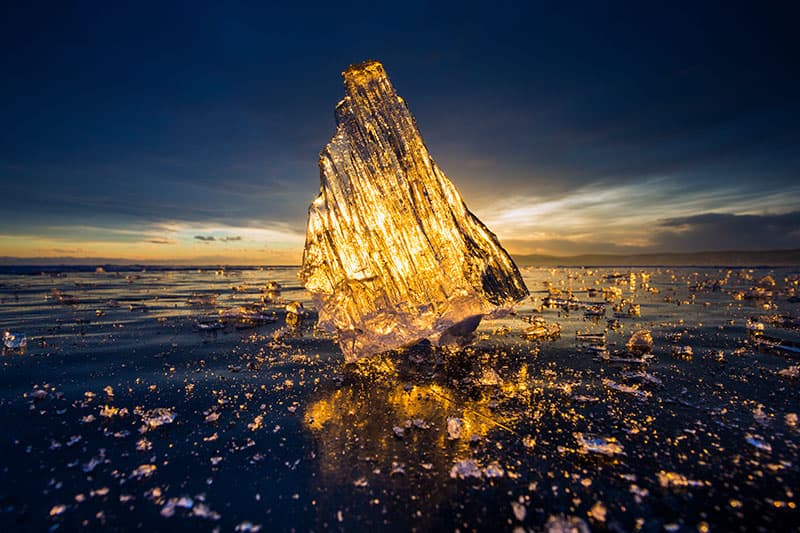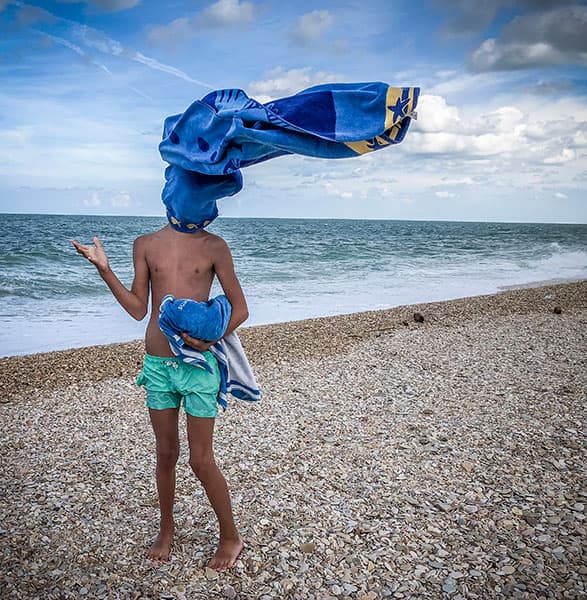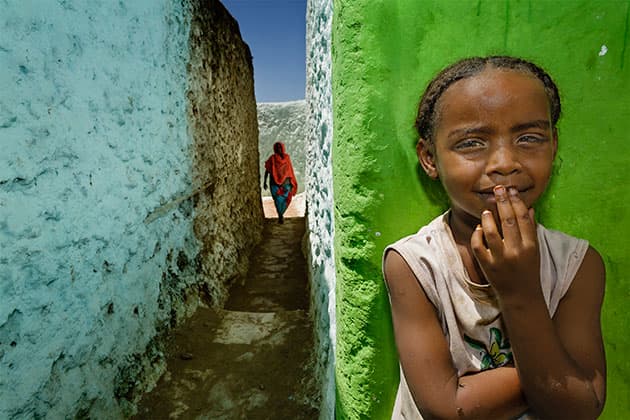
Canon EOS 5D, 24mm, 1/125sec at f/16, ISO 100. Credit: Stefano Pensotti/Travel Photographer of the Year
After another highly successful year for the International Travel Photographer of the Year (TPOTY) awards, the results of the 16th competition have been revealed. More than 20,000 images from amateur and professional photographers alike from 142 countries were entered. The images showcase stunning locations from all over the world and are a true celebration of this planet and its human and animal inhabitants.
All of the 150 winning images can be seen online in a stunning gallery that features a variety of vibrant and evocative scenes shot on high-end professional cameras, smartphones and everything in between.
Prizes this year include cash bursaries, professional cameras and lenses from Fujifilm, workshops, clothing, portfolios, prints and RPS memberships, to name a few. The winning images will be on show at a free-to-view outdoor exhibition at London Bridge City this spring, as well as other exhibitions internationally throughout 2019.
Stefano Pensotti, Italy – Overall Winner (above picture)
Harar Jugol is an ancient fortified historic Muslim city located in eastern Ethiopia. The walls that surround this sacred city, considered the fourth holy city of Islam, were built between the 13th and 16th centuries to serve as a protective barrier.
Stefano’s tips
- It was late morning so the light wasn’t great as it created strong shadows across the girl’s face. This is where a flashgun and reflector come in handy. Fill in the shadows with the flash, but use with a reflector to diffuse the bright and direct light.
- To capture your subject and their surroundings in sharp focus, set your lens to focus at its hyperfocal distance to ensure your subject and background both remain in focus for a great depth of field.

on D810, 105mm, 1/20sec at f/22, ISO 400. Credit: Javier Herranz Casellas/Travel Photographer of the Year
Javier Herranz Casellas, Spain – Natural World – Winner
When spring arrives, the agave – a plant that grows in Parque Natural Cabo Gata, Spain – begins to develop new leaves and thorns. Owing to its characteristics, the plant lends itself to multiple artistic dispositions for both the shapes and colours.
Javier’s tips
- It is essential to wear thick and old clothing to avoid getting scratched by thorns. Typically, the new buds of the agave are in difficult-to-access areas.
- A macro lens and narrow aperture of f/16 is required to capture details. A white umbrella is handy to soften the strong sunlight. I shoot handheld as I find tripods to be limiting, so I recommend raising the ISO to 400 and supporting the camera between the leaves.

Canon EOS-1D X Mark II, 100-400mm, 1/1000sec at f/4.5, ISO 500. Credit: Scott Portelli/Travel Photographer of the Year
Scott Portelli, Australia – Tranquillity – Commended
Dusky dolphins often travel together in numbers in the deep Kaikoura Canyon off the coast of New Zealand in search of food. They effortlessly glide through the ocean, coming up only to breathe. Their bodies are built for speed and manoeuvrability, and accentuated by that pivotal moment as they release air just below the surface, creating a disruption in the water.
Scott’s tips
- Timing is everything when shooting speeding dolphins. Anticipating and tracking movement through your camera is key to predicting where the dolphin might emerge from below the surface. Set your camera to focus tracking mode to achieve a pin-sharp shot.
- Shutter priority can be a useful mode in these situations and shooting at 1/2000sec will ensure you capture all aspects of movement: ripples in the water, reflections on the surface and the subject in various stages of emergence. With fast-moving subjects, high shutter speeds are paramount in achieving sharp focus.

Pentax K-S2, 200mm, 1/200sec at f/14, ISO 1600. Credit: Isabella Smith/Travel Photographer of the Year
Isabella Smith, USA – Young Travel Photographer of the Year – Winner
There were so many opportunities to take a variety of stunning photos while I was in Chefchaouen, Morocco. In this scene I particularly loved the contrast of blue and orange combined with the water movement and the organic moment it captured.
Isabella’s tips
- Before travelling anywhere, I always do a quick Google search for photographic areas in the place I’m visiting. When I see the most popular photography hot spots in that area come up repeatedly, I plan to go elsewhere and photograph something different.
- Plan for the weather! It was raining in many of my Morocco photos, so I used my weatherproof Pentax K-S2.

Canon EOS 5D Mark III, 17-40mm, 1/40sec at f/16, ISO 160. Credit: Edward Graham/Travel Photographer of the Year
Edward Graham, USA – Beauty of Light – Commended
It takes determination and plenty of layers to shoot in cold climates. But the glorious winter light found in Siberia is worth it. To capture this scene, I laid prone on the frozen surface of Lake Baikal as the sun set.
Edward’s tips
- Continually ask yourself, ‘How can I improve this scene?’ You might find a unique photograph if you just slightly change your position and perspective.
- When shooting in extremely cold temperatures, keep a spare battery in your innermost layer. That way you can continue to shoot when your main battery starts to freeze.
- Be patient and keep shooting – the light can change dramatically in a matter of seconds. In my image the sun only peeked through the clouds for a few minutes. I never would have seen this if I had given up.

Apple iPhone 8, back camera 3.99mm, 1/1500sec at f/1.8, ISO 20. Credit: Josien van Geffen/Travel Photographer of the Year
Josien van Geffen, Netherlands – Smart Shot – Commended
This photo was taken on a beach in Italy on a very stormy day. A red warning flag on the beach was blowing fiercely into the wind. I saw a father throw a towel towards his son to see how hard the wind was blowing. Everything looks still in the photo except the towel covering his head.
Josien’s tips
- When shooting action pictures with your iPhone you can choose to hold the button so your phone takes a burst of shots. While that’s an easy solution, it can distract you from the right moment. If you have visual insight, you can feel the moment – so listen to yourself when you push that shutter button.
- Before taking taking any photo always make sure your iPhone lens is clean! Many people neglect to do this and end up with foggy images due to the dust and dirt on the lens.

Canon EOS 5D Mark II, 100mm, 1/320sec at f/2.8, ISO 400. Credit: Matjaž Krivic/Travel Photographer of the Year
Matjaž Krivic, Slovenia – Travel Portfolio – Winner
I met Onno while I was travelling in East Africa working on my ongoing project ‘Anonymous friends’. Onno is a teenage girl from the Arbore tribe in Ethiopia’s Omo Valley. I was drawn to her because of her story. Like other women of the tribe, she enjoys decorating herself with hundreds of beads, which she believes makes her more attractive. Her hair is cut short, a symbol of virginity. Soon, Onno will marry and as part of the wedding process she will have to be circumcised. This process will be done by her mother, and like all Arbore women she will follow the tradition.
Matjaž’s tips
- The most important element of portrait photography is building an intimate relationship with your subject. Don’t be shy; get close and take the time to engage with your subject. You’ll get a better response by building up a level of trust and always do it with respect. The other thing that is just as important as building a relationship, I believe, is the story the portrait tells. Every person has a story, and every picture should tell part of that story.
- Focus on the eyes; after all, they are the window to the soul – you need to make them communicate with the viewer. Try to capture the whole experience. Think about the setting in which you will place your subject; try to show whatever you believe will help the viewer to connect with your subject. That is what I think would make a great portrait.

Canon EOS 5D Mark III, 24-70mm, 1/1000sec at f/4, ISO 500. Credit: Diana Buzoianu/Travel Photographer of the Year
Diana Buzoianu, Romania – New Talent, Festivals and Events – Runner-up
This Romanian festival is called The Spirit of the Bear and is a celebration of a bear’s life and a reminder that man and animal always have to find a good way of living alongside each other. The skin of the bear has been carefully preserved throughout the years, being found in the forests after the bear has died. The drums and the music of these festivities encourage the participants to go into a deep state of trance while they are performing the bear dance.
Diana’s tips
- This event is held once a year, usually in the winter, in Comarnic, Romania, so preparation is a must. Winter clothes will keep you warm throughout the day and some water will hydrate you during the festival.
- It’s very important to have spare batteries and an extra memory card; there are lots of moments to capture and interesting faces and dancers to photograph, so you will need to be prepared for a long day.








